Pioneers and Founders at the Crossroads Gallery
Introduction
Text-to-speech Audio
Images
Visit the Pioneer Theater to hear some early pioneer stories.
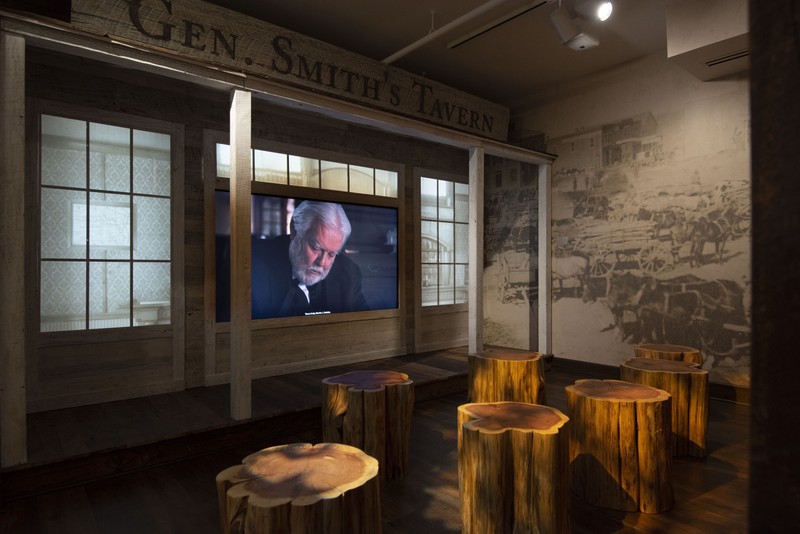
Learn about early settlers in Springfield and explore what their lives were like
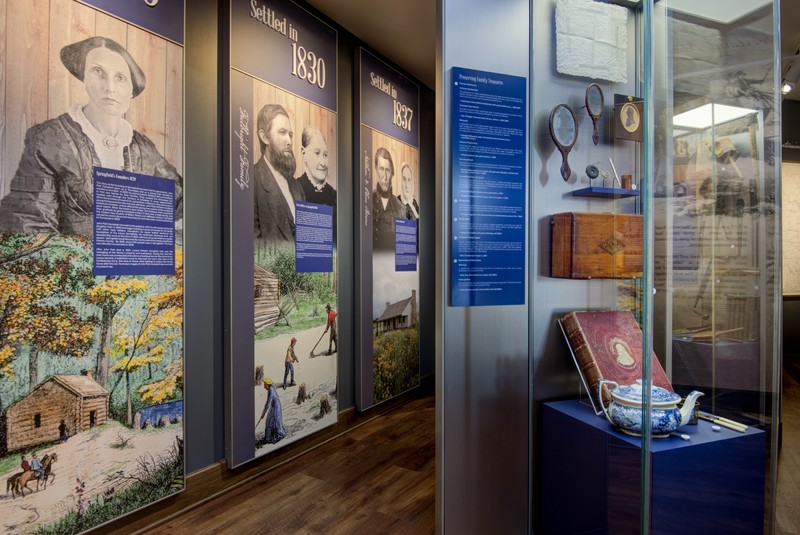
Jacob Painter Guns
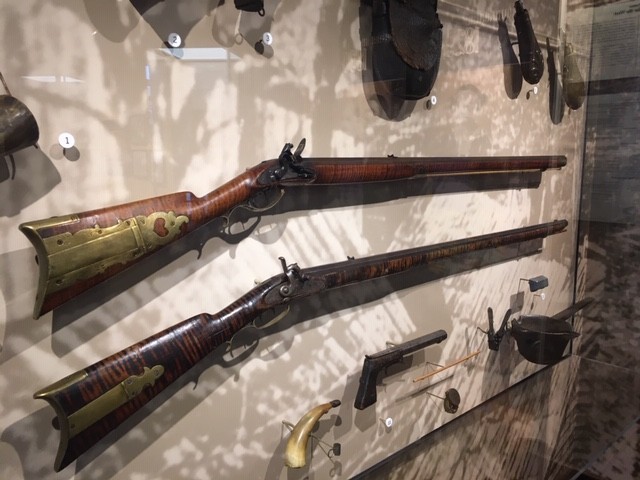
Campbell Family Teapot
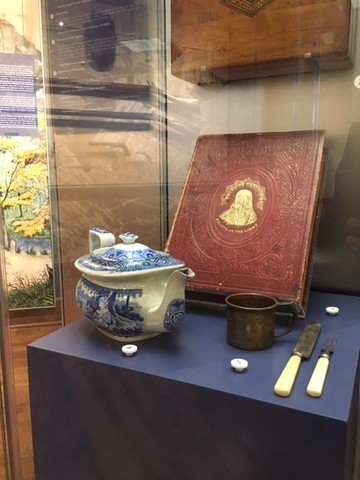
Pioneer Tools
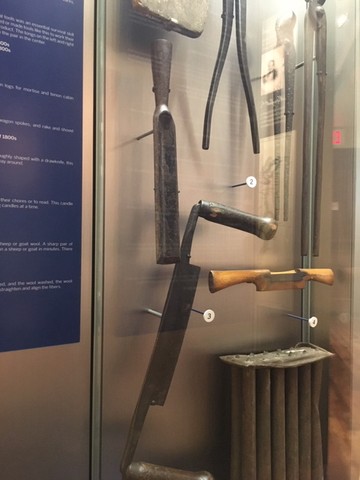
Backstory and Context
Text-to-speech Audio
John Polk Campbell moved out with his wife Louisa Campbell, children, and six slaves in 1830. When they arrived, they found that others including the Fulbright family had already moved onto the land he claimed. The Fulbrights moved off the Campbell’s land and had to rebuild while John and his family moved into the Fulbright’s original cabin. Campbell had additional log cabins built that year to help accommodate more Tennessee families joining them.
As the area grew quickly over the next couple of years. In 1835, John P. Campbell donated fifty acres to the town to become the county seat of the newly established Greene County. The fifty acres includes the Square that we left and this park. Forty-eight of those acres were sold by the city, and the revenue was used to build a new courthouse on the remaining two acres, which is today the Public Square. From there the city only grew. But it didn’t really modernize. Springfield stayed in the “pioneer era” of its growth for a very long time because it was isolated without a railroad to connect it to bigger cities.
A few artifacts in the gallery to highlight are:
- Jacob Painter Guns - Jacob Painter came to Greene County with his parents and his young wife in 1831. The first began to homestead in Galloway, Missouri, opening a mill and Blacksmith shop in 1832. In 1835, the Painters moved to Springfield and bought a lot on the northeast corner of the Square for ten dollars, where he built a Blacksmith and gunsmith shop. His skill in making and repairing guns became well-known, and soon he was outfitting not just the local hunters, but also the westward-bound pioneers and 49ers on their way to California looking for gold. The gallery displays two excellent examples of the long guns he made in his shop. Both rifles, the flintlock, and the percussion feature the signature tiger-striped stock markings that were unique to Painter in this area.
- Campbell Family Teapot - Pioneer families often kept a few of the amenities of their former lives as a reminder of more civilized times. This teapot was a gift to Sarah Rush Campbell Owen from her in-laws upon the occasion of her marriage to Jabez Owen in 1853. After their wedding the couple settled in Springfield. Sarah Rush Campbell Owen's parents are known as the founders of the city of Springfield.
- Pioneer Tools - This case of pioneer tools showcases a variety of items that would have used in daily life. These are woodworking tools: a carving chisel, drawknife, and spokeshave. Drawknives and spokeshaves were both used to round wood items like wagon spokes and tool handles. Drawknives were used first to roughly shape round objects, and then spokeshaves were used to smoothly finish the curved objects all the way around.
